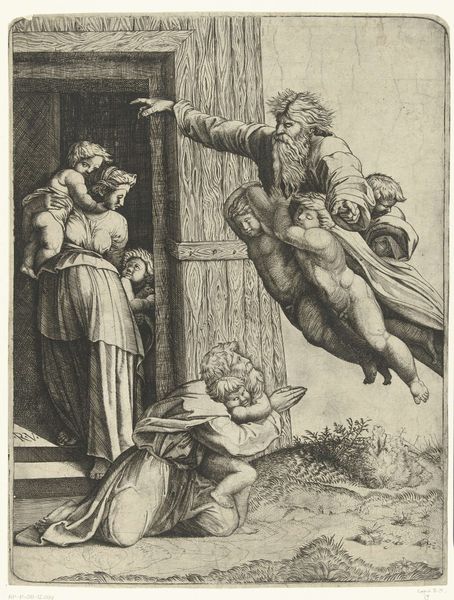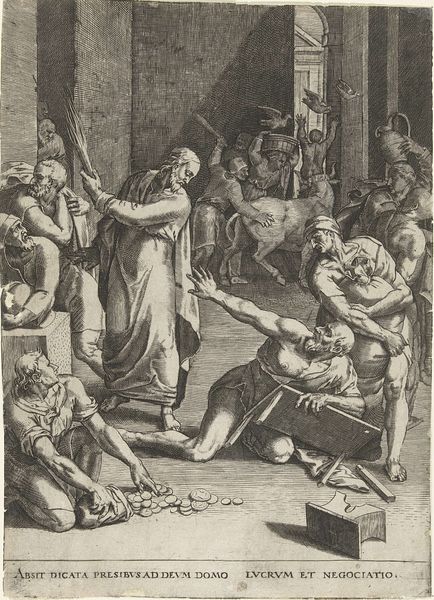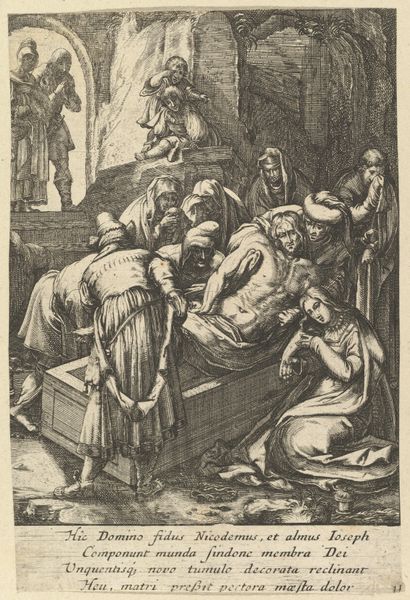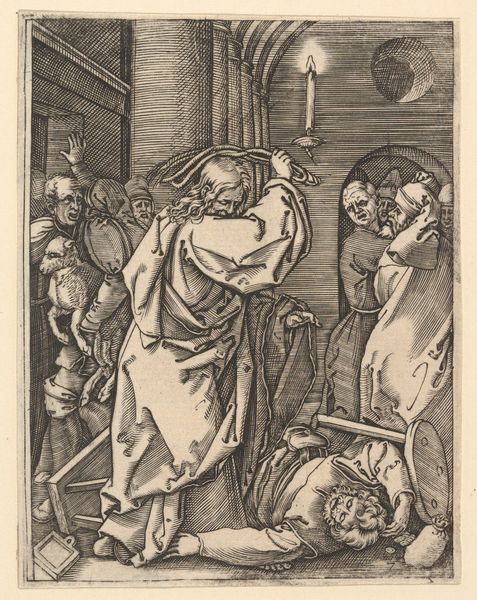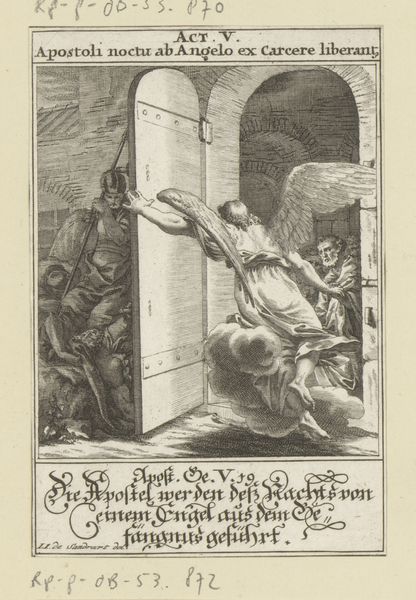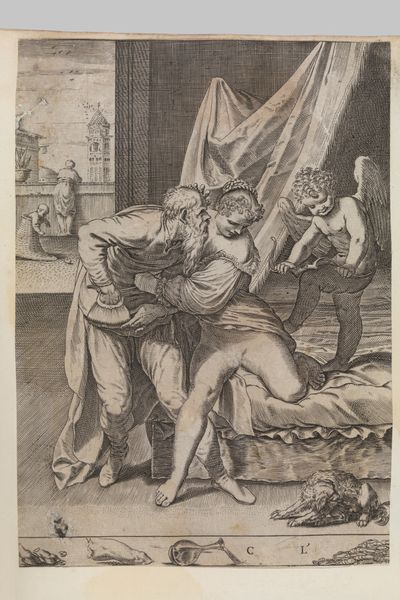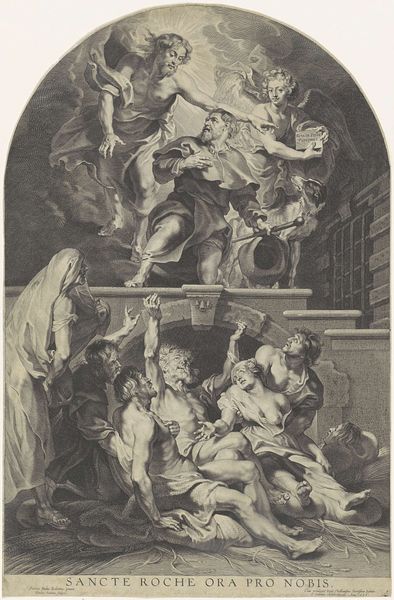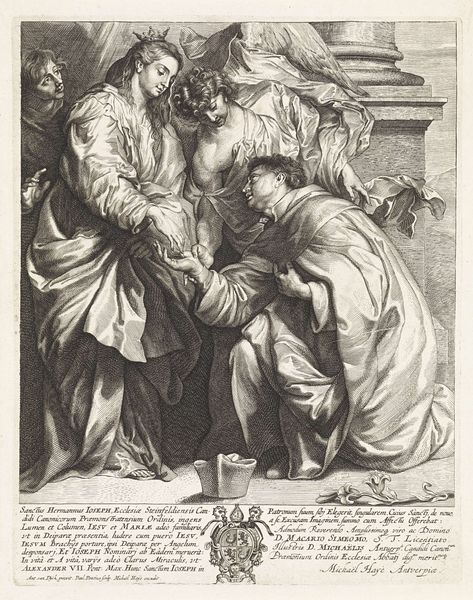
print, engraving
#
narrative-art
# print
#
mannerism
#
figuration
#
history-painting
#
engraving
Dimensions: height 314 mm, width 254 mm
Copyright: Rijks Museum: Open Domain
Editor: This is an engraving titled "God Appears to Noah After the Flood," dating from 1513 to 1565. The print certainly captures a dramatic moment; what strikes me most is the swirling dynamism of the figures juxtaposed with the rigid, almost architectural lines of the doorway. How do you interpret this work, focusing on the elements of its visual composition? Curator: A formal analysis reveals a fascinating tension between the earthly and divine realms. Consider the strong diagonal thrust of God’s figure, balanced against the verticality of Noah’s family. Note how the artist uses line and shadow to define volume and movement, especially within the deity’s flowing garments and powerful gesture. It also emphasizes how they were influenced by Mannerism. Are there any observations you see that stand out to you? Editor: Now that you point it out, I notice the exaggerated musculature and contorted poses—very Mannerist! The tonal variations created by the engraving also direct the eye—from the radiant figure of God, who seems suspended in mid-air, to the darker, more grounded forms of Noah and his family. Curator: Precisely! And let us not overlook the door—it operates not only as architectural scaffolding, but also emphasizes containment against ethereal expansiveness. The rigid wood grain juxtaposes effectively with the fluidity and dynamism of the divine and human actors. This allows us to observe that meaning arises from the relation of forms and not necessarily external knowledge. How does this affect your overall view? Editor: I see the image in a completely new light, moving beyond just the narrative. I had originally fixated on the religious implications and drama; but I see that an approach that prioritizes elements can yield just as great insights. Curator: Exactly. Analyzing the form allows for understanding meaning.
Comments
No comments
Be the first to comment and join the conversation on the ultimate creative platform.
